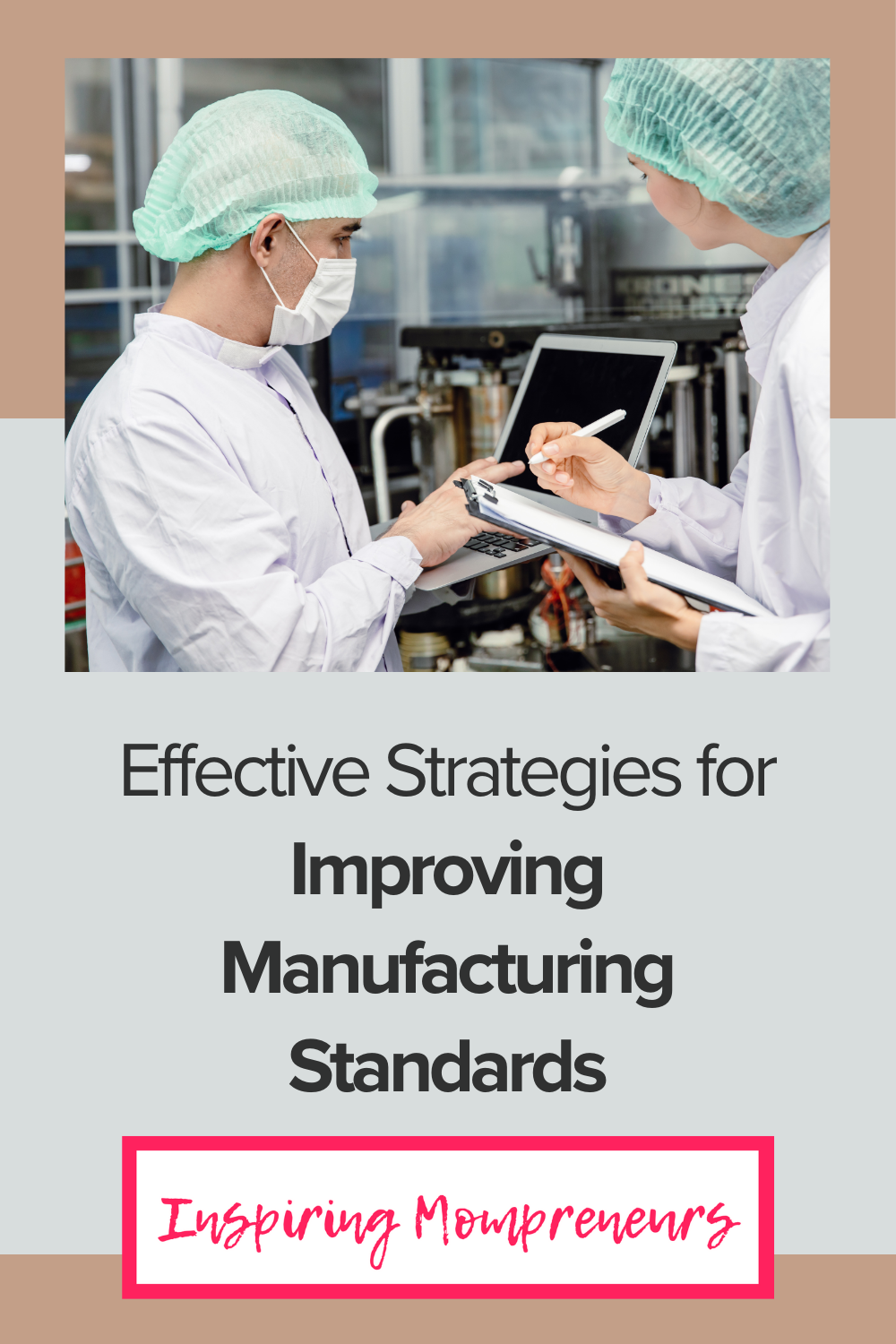Effective Strategies for Improving Manufacturing Standards | InspiringMompreneurs
The manufacturing landscape is fast and dynamic, and as manufacturing is at the heart of many industries, improving standards, productivity, and efficiency is worth striving for.
To deliver the required accuracy and standards, the synchronicity of the production line, the machinery, the personnel, and more needs to be maintained and upheld.
But what if you fall below this mark and need to make improvements to adjust your standards and bring them back in line with what you want to deliver and what others expect?
Let’s take a look at a few things you can do to improve standards in your manufacturing operations.
QMS
A QMS, or quality management system, is not just a framework but a crucial roadmap for integrating quality control into everything you do. It’s a necessity that can significantly enhance your operations and the quality of your products.
It enables you to implement best practices at each stage, weaving quality through every aspect of your work, not just at certain points throughout the process.
The benefit of a QMS system is that you can work to standardized guidelines and procedures, which allows you to achieve consistency across the board in a structured manner.
 Enhanced Cleaning Materials
Enhanced Cleaning Materials
It goes without saying that if you’re not upholding cleanliness and hygiene standards, you won’t achieve high standards, and things will start to fall by the wayside. From cross-contamination to increased breakdowns, downtime, and substandard compliance, you can risk a lot by not maintaining your machinery’s hygiene and working areas. These risks can lead to product recalls, customer dissatisfaction, and even legal issues, all of which can significantly impact your business.
You do not need to find the proper cleaning apparatus, third-party services, or chemicals for your job. However, cleaning chemicals for the food industry in manufacturing will be different than those for car parts or technology, so it is vital to ensure that what you use to clean your equipment is suitable for the products you make.
Employee Training and Empowerment
The more you can equip your staff to do, the more control they will have over what happens when they work. They need to be fully trained in all aspects of their job role and understand how to identify issues or concerns and how to report them at a bare minimum.
However, empowering them to maintain and uphold standards proactively takes things one step further. This means including them in all standards training and initiatives, encouraging feedback and active participation in operations, and giving them comprehensive training in quality control standards and best practices. They also need to feel comfortable and secure in reporting issues, knowing there won’t be any repercussions for bringing quality issues to light. This empowerment gives them a sense of control and responsibility in maintaining high standards, fostering a culture of accountability and ownership.
Technology for Quality Control
You can implement various technologies to ensure that your standards are upheld and adhered to and to assist you in implementing higher quality control checks and standardization. These technologies provide a ‘safety net ‘, meaning they ensure that no deviation from the set standards goes unnoticed, thereby boosting your confidence in the quality of your products and reassuring your team that the standards are being met.
You can use machine vision systems to leverage cameras and image processing software. This allows you to inspect products and check for any defects. For example, you can use sensor-based monitoring systems that detect temperature, vibration, humidity, and pressure changes, which help you collate real-time data to maintain control and processes. Data analytics software can be instrumental in helping you spot trends and patterns to give you deeper insights into what you do. At the same time, AI and ML can analyze data to help you predict real-time issues and improve automation.
Preventative Maintenance
Preventative maintenance is the planning and proactive endeavors that focus on the health and functionality of the equipment you use. A well-crafted maintenance program will enable you to preempt repairs and breakdowns and allow for planned downtime or any work that needs to be completed so you’re not suddenly experiencing a loss of productivity.
Performing repairs only after something breaks down can result in lower quality standards and a slowdown in capacity. It can lead to higher costs as minor issues can magnify until the equipment is rendered unusable or has caused damage or loss of stock.
Preventative maintenance allows you to bypass physical damage and improve standards, lower repair costs, extend lifespans, and improve safety.


